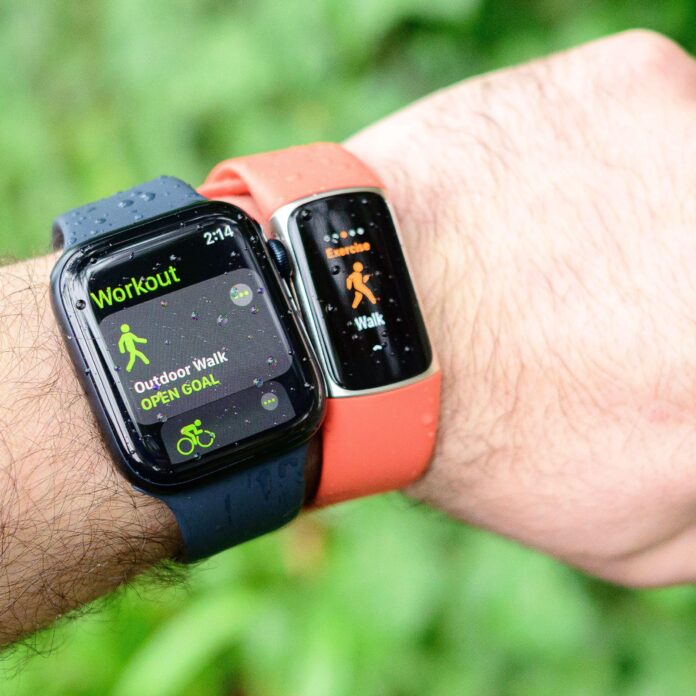In a world where technology seamlessly merges with personal health and fitness, the wearable device landscape has evolved dramatically in recent years. as we venture into 2025, two prominent contenders have emerged, each vying for a place on your wrist: the Apple Watch Ultra and the Fitbit Charge 6. The Apple Watch Ultra, a powerhouse of smartwatch capabilities, blends style with cutting-edge technology to cater to both tech enthusiasts and fitness aficionados alike. Meanwhile, the Fitbit Charge 6 shines as a dedicated fitness band, boasting a streamlined design and robust features focused on health tracking. But as consumers navigate this refined market, the question arises: should one prioritize a multifunctional smartwatch or the targeted efficacy of a fitness band? In this article, we’ll delve into the strengths and weaknesses of both devices, helping you determine which wearable best suits your lifestyle in the rapidly evolving digital age.
evaluating Design and Build Quality in Modern Wearables
When it comes to modern wearables, both the Apple Watch Ultra and Fitbit Charge 6 showcase remarkable design and build quality. The apple Watch Ultra, known for its rugged aesthetics, combines aerospace-grade titanium with a sapphire crystal display, offering durability along with style. its **swim-proof** and **drop-resistant** features make it an ideal companion for adventurous users.On the flip side, the Fitbit Charge 6 emphasizes a lightweight and sleek form factor, crafted from high-quality materials designed to withstand daily wear and tear. The **water-resistant** fabric and interchangeable bands elevate its customization, allowing users to express personal style without sacrificing functionality.
In analyzing their build quality, several factors come into play:
- Materials: the Apple Watch Ultra utilizes premium, durable materials, whereas Fitbit focuses on versatility and comfort.
- Weight: The lightweight Fitbit strain encourages all-day wear, while the heft of the Ultra is a point of consideration for some users.
- Display: Both devices feature high-resolution displays, but the Ultra’s larger screen offers a more immersive experience.
| Feature | Apple Watch Ultra | Fitbit Charge 6 |
|---|---|---|
| Material | Aerospace-grade titanium | Aluminum and Fabric |
| Water Resistance | Yes, up to 100m | Yes, swim-proof |
| Customization | Limited bands | Wide range of interchangeable bands |

Exploring Health and Fitness Features for Every Lifestyle
The Apple Watch Ultra and Fitbit Charge 6 cater to diverse health and fitness enthusiasts by offering features tailored to various activities and preferences. **Apple’s flagship smartwatch** emphasizes versatility, allowing users to switch seamlessly between workouts while keeping track of health metrics such as heart rate variability, blood oxygen levels, and an ECG feature. In contrast, **Fitbit Charge 6 excels** in catering to fitness-centric users with its advanced fitness tracking capabilities, including built-in GPS for outdoor activities, extensive workout modes for targeted training, and reminders to stay active. Each device is designed with a unique audience in mind, appealing to those who prioritize different aspects of wellness and lifestyle.
When evaluating which device might best suit your needs, consider the following features:
- Health Monitoring: Both devices offer thorough health tracking, yet the Apple Watch Ultra integrates more advanced health sensors, appealing to tech-savvy health enthusiasts.
- Battery Life: The Fitbit Charge 6 outshines with its extended battery life, ideal for users who prioritize longevity over the myriad of smart features.
- App Ecosystem: The Apple watch boasts a wider range of apps, perfect for those who seek a multifunctional smartwatch experience beyond fitness.
- Compatibility: If you’re heavily integrated into the Apple ecosystem, the Apple Watch ensures seamless connectivity, while Fitbit offers a cross-compatible experience with both iOS and Android.
Understanding the core differences between the two can help you make an informed decision. Here’s a rapid comparison:
| Feature | Apple Watch Ultra | Fitbit Charge 6 |
|---|---|---|
| Price | Higher-end | Mid-range |
| Health Tracking | ECG, Blood Oxygen | GPS, Heart rate |
| Battery Life | About 18 hours | Up to 7 days |
| Water Resistance | Up to 100m | Up to 50m |

comparing Battery Life and Performance for Active Users
The Apple Watch Ultra impresses with its remarkable battery life, boasting up to **36 hours** on a single charge under regular usage conditions. For active users who engage in outdoor workouts and extended adventures, it can stretch to **60 hours** with the Power Saving Mode activated. This mode significantly enhances longevity by dimming the display and limiting tracking capabilities, making it ideal for ultramarathons or multi-day trips. Users can also enjoy a range of smart features without necessitating frequent recharges, which is a crucial consideration for those on the go. Key features that contribute to its performance include:
- **Always-on Retina display** for quick access to stats
- **High-precision GPS** for accurate location tracking
- **Heart rate monitor** that works seamlessly throughout the day
In contrast, the Fitbit Charge 6 excels in its longevity, offering up to **7 days** of battery life, which is impressive for a fitness band. With an emphasis on wellness tracking rather than comprehensive smartwatch functionalities, it serves the active user well with its streamlined features, allowing users to switch between health metrics without draining the battery quickly. Its effective use of battery draws attention to highlights such as:
- **Sleep tracking**, helping users optimize rest
- **Daily Readiness Score** to guide workout intensity
- **Compact design** that’s lightweight yet durable
See the comparison of battery life below:
| Feature | Apple watch Ultra | Fitbit Charge 6 |
|---|---|---|
| regular Usage | 36 hours | 7 days |
| Power Saving Mode | Up to 60 hours | N/A |

Analyzing Compatibility and Ecosystem Integration in 2025
As we navigate through 2025, the Apple Watch Ultra and the Fitbit Charge 6 represent two distinct approaches to wearable technology, each with its own ecosystem and compatibility advantages. The Apple Watch Ultra thrives within the Apple ecosystem, where integration with devices like the iPhone, iPad, and Mac creates a seamless user experience. features such as Handoff and Siri functionality ensure that users can switch between devices effortlessly. In contrast, the Fitbit Charge 6 caters more to fitness enthusiasts with its robust health tracking capabilities, benefiting from integration with the fitbit app, Google Fit, and other third-party applications, making it a versatile choice for those who prioritize fitness metrics.
When assessing compatibility, users need to consider several factors:
- App Ecosystem: Both devices support various health and fitness applications, but the Apple Watch offers a richer app store with many productivity apps.
- Device Compatibility: The Apple Watch requires an iPhone, while the Fitbit Charge is compatible with both android and iOS, providing greater flexibility.
- Data Syncing: Apple’s health data integration is extensive, allowing users to consolidate information from various health apps, while Fitbit focuses heavily on its fitness-centric metrics but has been steadily improving its overall health dashboard.
| Feature | Apple Watch Ultra | fitbit Charge 6 |
|---|---|---|
| Health Tracking | Comprehensive (heart rate, ECG, Blood Oxygen) | Advanced (heart rate, sleep, stress) |
| Battery Life | Up to 36 hours | Up to 7 days |
| Water Resistance | Up to 100m | Up to 50m |
Ultimately, the choice between the Apple Watch Ultra and the Fitbit Charge 6 will largely depend on the user’s lifestyle and requirements. If a seamless integration with Apple products and extensive app support is paramount, the Apple Watch Ultra stands out as the better option. However, for those who want a dedicated fitness tracker with excellent battery life and cross-platform compatibility, the Fitbit Charge 6 presents a compelling choice. As technology continues to evolve, the decision will rest not just on current compatibility but also on how each ecosystem adapts to future services and applications.
In Conclusion
In the ongoing debate of smartwatch versus fitness band, the Apple Watch ultra and Fitbit Charge 6 stand out as prime contenders, each catering to different lifestyles and priorities. As 2025 rolls in, it’s clear that the choice between these two devices is not merely a matter of features but also of personal philosophy toward health, technology, and everyday convenience.
Whether you lean toward the robust capabilities of the Apple Watch Ultra, with its extensive app ecosystem and advanced health monitoring, or prefer the streamlined, fitness-focused approach of the Fitbit Charge 6, your decision will ultimately reflect your own needs and preferences.
As we navigate a world increasingly driven by technology, both of these wearables offer valuable insights into our health and well-being—reminding us that the best device is the one that fits seamlessly into our own unique rythm of life. So, as you ponder your next investment in wearable tech, consider what truly matters to you: is it an all-encompassing smartwatch experience or a specialized tool for fitness? In this dynamic landscape, the choice is yours to make.


